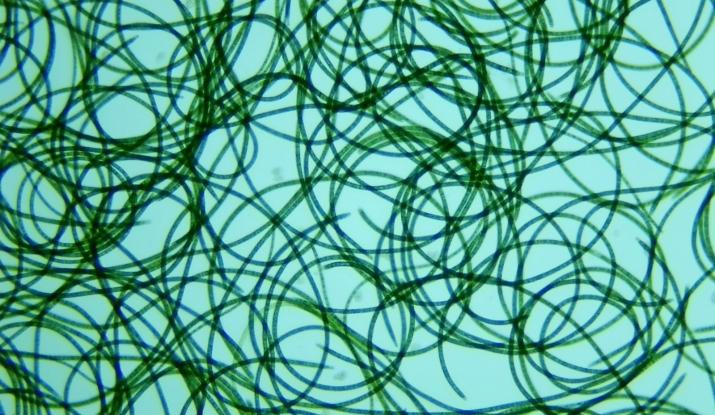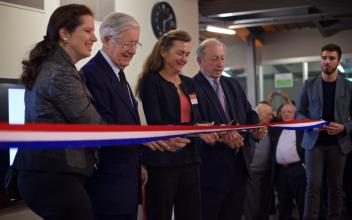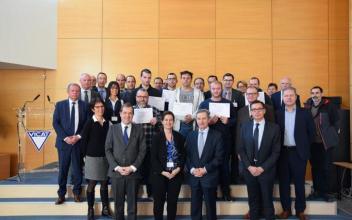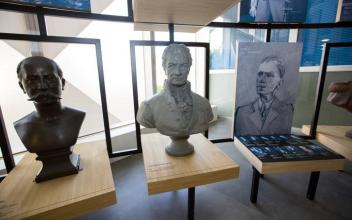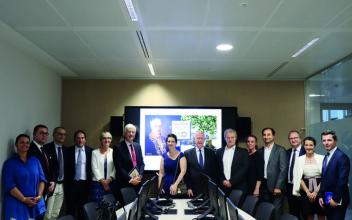CimentAlgue: when the cement industry becomes a breeding ground for microalgae
CimentAlgue, after 2 years of experimentation
Final curtain for the pioneering project, CimentAlgue: a promising step forward for industrial decarbonisation
On 19 October 2021, Vicat officially announced its "CimentAlgue" industrial research project, a pioneering initiative in environmental innovation. In partnership with AlgoSource Technologies, TotalEnergies, the University of Nantes and the CNRS, the aim of this industrial research project was to harness CO₂ and waste heat from cement production to produce microalgae, which are natural carbon sinks.
A simple idea, an ambitious technical challenge
The principle of CimentAlgue is based on a bold idea: use CO₂ emissions and the waste heat generated by the Montalieu-Vercieu (Isère) cement plant as resources for developing microalgae cultures that photosynthesise in natural light. These microscopic organisms consume up to 10 times more CO₂ per square metre than terrestrial plants, while offering opportunities in the fields of nutrition, biofuels and cosmetics.
The project was financially supported by France’s Environment and Energy Management Agency, ADEME, as part of the 2014 BIP call for proposals, and took place in two major phases:
- Phase 1 (2016–2019): laboratory trials in Saint-Nazaire.
- Phase 2 (2019–2025): construction and operation of a full-scale 800-square metre demonstrator installed on the site of the Vicat cement plant in Montalieu.
A demonstrator unique in France
The demonstrator was designed to test several crop technologies:
- open and closed "raceway" ponds;
- a tubular photobioreactor;
- an "AlgoFilm" thin-layer photobioreactor.
Protected in a greenhouse to prevent external contamination and to regulate the temperature, the crops are heated thanks to waste heat captured directly from the cement plant's kiln. CO₂ is taken directly from the cement kiln exhaust stack during the cement production process.
This system produced up to 1 tonne of dry microalgae per year, while precisely measuring the carbon footprint of this industrial symbiosis.
Julien Poillot, Innovative Project Manager at Vicat:
"CimentAlgue has shown that it is possible to convert our industrial emissions into biological resources. It's a real step towards a more circular and more responsible industry. "
A human and technical adventure
It took four years of design, engineering and validation to build the prototype, involving around 30 suppliers and installers. Despite a number of technical challenges, the teams demonstrated perseverance and ingenuity to complete this project.
Eric Lefebvre, Innovative Project Manager at Vicat:
"This project was a great collective adventure, driven by complementary technical and human skills. It brought together a very diverse range of skills around a common goal: to reduce the carbon footprint of our regions while innovating."
Harnessing CO2: Concrete results and lessons learned
After two years of operation, the results are promising:
- Biomass production (microalgae) is optimised by recovering waste heat generated by the Montalieu plant, which is used to heat the ponds, eliminating the need for an external heat source and extending the growing period.
- The recovery of CO2 produced by the Montalieu plant is viable because it can be used as a source of carbon, replacing commercial bicarbonates
The facility is now shut down and being cleaned. The latest scientific reports are being written. But the lessons learned from CimentAlgue are valuable: they open the way for new industrial applications, particularly in the field of biofuels, and lay the foundations for replication on other sites.
Beyond the technical results, the "CimentAlgue" project has given Vicat the opportunity to strengthen its expertise in industrial ecology and to illustrate its commitment to a more sustainable industry. This project is fully in line with the group's climate roadmap, which aims to achieve carbon neutrality by 2050 across its entire value chain.
